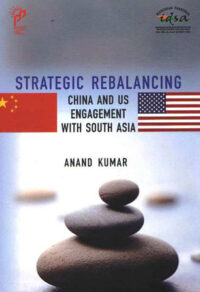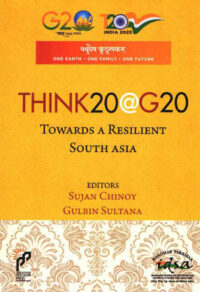Bangladesh: A Half Century into Freedom
The article is an observation of the fifty years that have gone by since the liberation of Bangladesh through a guerrilla war against Pakistan in 1971. It spells out the causes behind the military and political collapse of the Pakistan state in Bangladesh, formerly the eastern province of Pakistan. Furthermore, the article is a brief study of the conditions confronting Bangladesh at birth, which at a certain point pushed the country into reverse gear through the rise of illegitimate regimes in the mid-1970s and early 1980s.
Opportunity of the Century
The year 1971’s geostrategic significance for the Indian subcontinent rivals that of 1947 when British India was divided into India and Pakistan. While the roots of Bangladesh's secession from Pakistan lay firmly within the Pakistani polity, India's political support for the Bangladesh freedom movement and its military intervention were crucial for the liberation of Bangladesh. The Indian campaign for the liberation of Bangladesh was brilliantly conceived and deftly executed.
Bangladesh–India Relations: Strengthening Historical Ties
In a fast-emerging multipolar Asia, and in the fast-shifting geopolitics of the area where ostensive national interests are being pursued with growing military-driven intensity, enhancing strategic ties between close and historic neighbours like Bangladesh and India has assumed greater urgency. The region also faces major socio-economic challenges, which were exposed brutally by the Coronavirus pandemic and its effects on lives and livelihood.
India–Bangladesh Ties: Half Century of Consolidation
Bangladesh’s emergence, as a new nation at the height of the Cold War, in 1971, re-drew political borders in the Indian subcontinent. It was one of the most significant geopolitical events of the latter half of the 20th century. India’s ties with Bangladesh have taken great strides in the last decade in comparison to the first 40 years, expanding and strengthening across a wide template of sectors.
1971: Memories, Facts and Words Overheard
It was hot and muggy on 25 March 1971, with nothing to suggest that the day would turn into an ghastly night. The usual no-work gang were lounging around; my brother was washing the family car and the rest were just doing nothing. This included my banker-father who had been transferred to Karachi on the ground that he had given unsecured loans—small ones—to the wretchedly poor, affected by the cyclone of 1970. He had refused to go and taken leave instead.
Working with the Refugees, 1971
In March 1971, I was working on an Oxfam-UK supported Gandhian village development project in Bihar, India, where I had been for almost three years. Through the BBC and some sketchy Indian newspaper reports, I learnt about the unrest in Dacca in the early part of March 1971. Sheikh Mujib’s speech of 7 March was well reported by The Statesman newspaper which always reached Gaya from Calcutta one day late. However, nobody was prepared for what would unfold later that month.
Interrogating the Spirit of 1971: Beyond Historicisms
The tale of Bangladesh’s liberation war of 1971 cannot be told without the ‘before’ and a bit of the ‘after’ of that year, as it would then turn into a futile exercise in historicism,2 merely, ‘capturing’ that instant of extensive explosion which ascended like the phoenix, while ignoring the intensive seedbed of creative ‘becoming’ from which it arose.
The Road to Victory Day 1971: An Insider’s Account
‘Isn’t it wonderful to be witness to the birth of your country?’ These words were shouted out to my mother and myself by David Vanzant, an international aid worker, just outside the ‘neutral zone’ that was set up in the Hotel Intercontinental in Shahbagh, Dhaka. Crowds were milling around him, and truck-loads of Indian soldiers who had fought their way into Dhaka, alongside troops of Mukti Bahinis (Bangladeshi freedom fighters), shouting ‘Joy Bangla’ at the top of their voices in sheer ecstasy!
My Days at the Swadhin Bangla Betar Kendro: The Radio Broadcasting Centre During Bangladesh Liberation War in 1971
The War of Liberation 1971, or the (Muktijuddho), or just Ekkator er Juddho as it is popularly known in Bangladesh, was a People’s War in which all Bengalis participated, sans a few thousands of the country’s seven and a half crores. This was a peoples’ struggle against the undemocratic Government of Pakistan and its oppressive Army. It was a war where ordinary people from all strata of life ? who knew nothing about waging a war ? took up arms against a trained and fully armed Pakistan Army, while many others ? men and women ? contributed in various other ways.

















